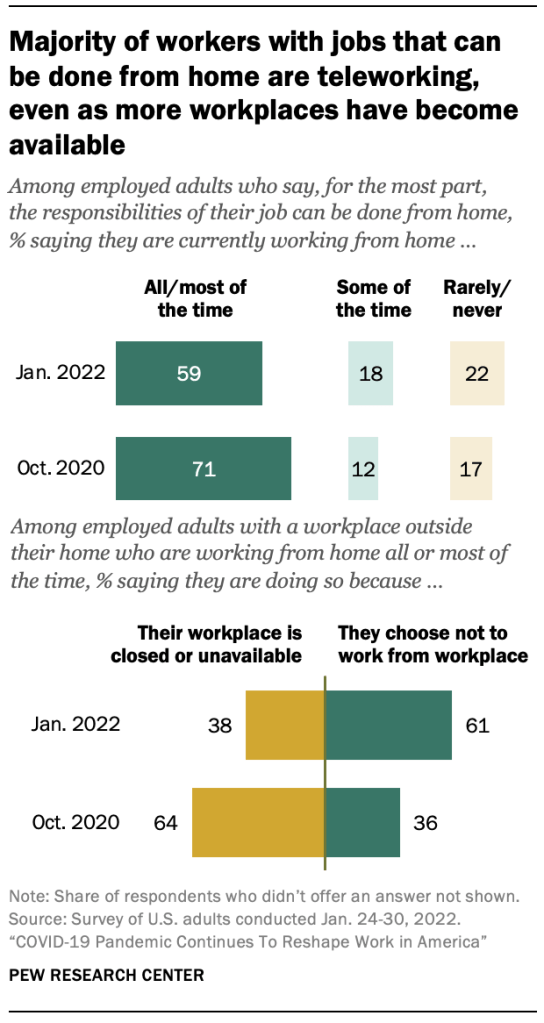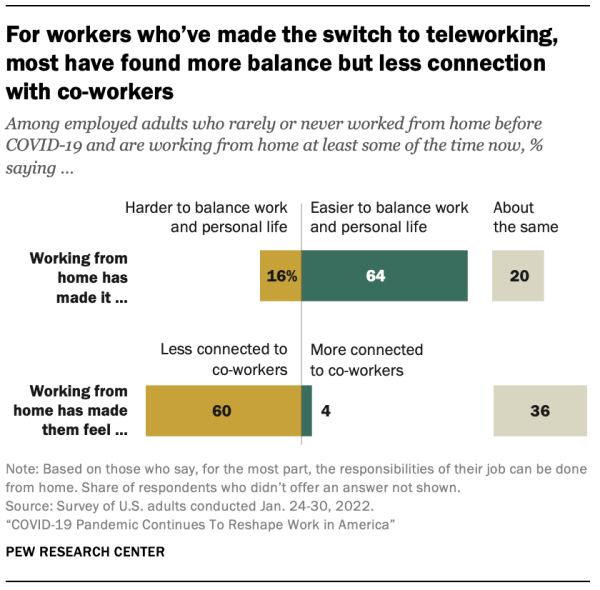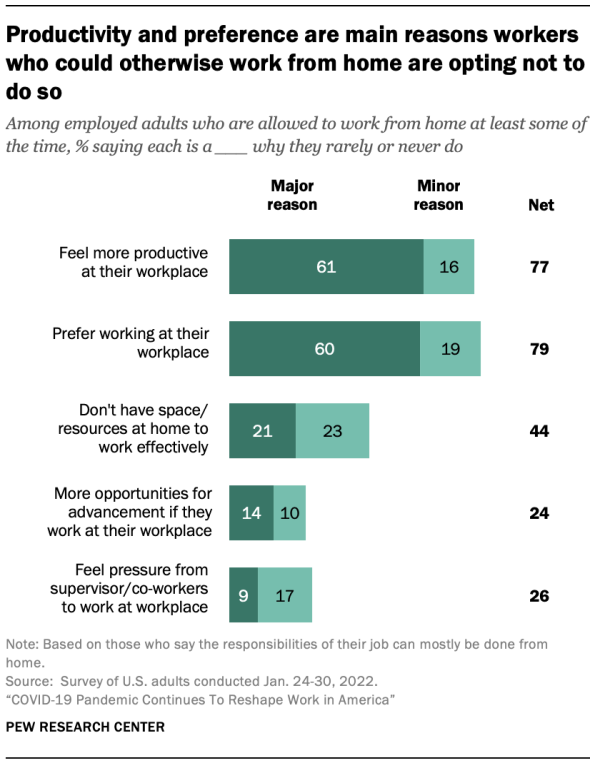It has been a rough couple of years for US small businesses. As the proverbial dust begins to settle, small business owners are now faced with a challenge regarding production and whether their workforces will be better off working remotely or whether it is better to get everyone back into the office again. In some newly released research, the Pew Research Center has sought to uncover where the small business workforce is headed. The following is taken directly from that recent research:
- Nearly two years into the COVID-19 pandemic, roughly six-in-ten U.S. workers who say their jobs can mainly be done from home (59%) are working from home all or most of the time. The vast majority of these workers (83%) say they were working from home even before the omicron variant started to spread in the United States, according to a new Pew Research Center survey. This marks a decline from October 2020, when 71% of those with jobs that could be done from home were working from home all or most of the time, but it’s still much higher than the 23% who say they teleworked frequently before the coronavirus outbreak.
- For those who have made the switch to telework, their work lives have changed in some significant ways. On the plus side, most (64%) of those who are now working from home at least some of the time but rarely or never did before the pandemic say it’s easier now for them to balance work with their personal life. And many (44%) say working from home has made it easier for them to get their work done and meet deadlines, while very few (10%) say it’s been harder to do this. At the same time, 60% say they feel less connected to their co-workers now. Most (72%) say working from home hasn’t affected their ability to advance in their job.
- Looking to the future, 60% of workers with jobs that can be done from home say when the coronavirus outbreak is over, if they have the choice, they’d like to work from home all or most of the time. This is up from 54% who said the same in 2020. Among those who are currently working from home all or most of the time, 78% say they’d like to continue to do so after the pandemic, up from 64% in 2020.
- Most U.S. workers (60%) don’t have jobs that can be done from home, and others who do have these types of jobs are going into their workplace at least sometimes. For a large majority of these workers, their jobs continue to involve at least some in-person interaction with others at their workplace.
- Workers with jobs that can be done from home who are choosing to go into their workplace cite preference and productivity as major reasons why they rarely or never work from home. Six-in-ten of these workers say a major reason they rarely or never work from home is that they prefer working at their workplace, and a similar share (61%) cite feeling more productive at their workplace as a major reason.
- About one-in-five workers (22%) who say the responsibilities of their job can mostly be done from home also say they rarely or never telework. For most (64%), this is because their employer doesn’t allow them to work from home more often. But for some (36%), there are other reasons why they’re opting to go into their workplace rather than working from home.
-Written by Kevin Sawyer





